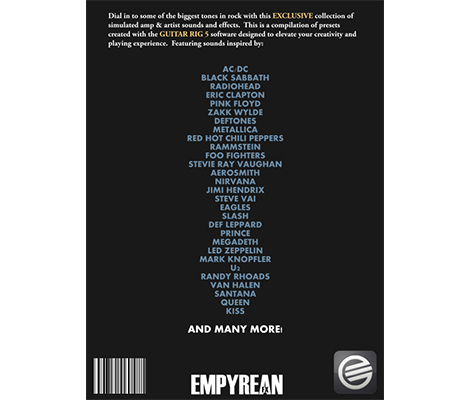
On the bottom-left, you can select the presets, which are filtered by the preset attributes.This is similar to the Cubase's MediaBay browser, which I have explained in a previous tutorial. On the upper-left side, you can see the preset attributes, which help you to select the presets according to different styles, genre, effects or products.You can select the presets that you want, or manually add each element to build up to your required sound. The Guitar Rig Interface is simple but powerful. Adjust it to your liking, and start experimenting. Here you can adjust the amount of effect that you need by adjusting Send level. Select the audio track, go to the Sends option in the inspector, select the newly added FX Channel as a bus, and switch it on. Now comes the fun part-sending the output from the audio track to the FX Channel.You can add more plugins or set up sends if you need, but for the sake of simplicity, we're not going to add any more effects. The FX Channel track will already have the Guitar Rig plugin on it.You can change the name of the FX Channel by double-clicking on the track. Once you've added the FX Channel, it will appear as a track in the FX Channels folder.Here, you can also change the audio output configuration if needed. Select the Guitar Rig plugin from the effects drop-down list. Add an FX Channel from the Project > Add Track menu.So by using a send as an FX Channel, you can set up many tracks to the same effect without affecting the CPU. It’s preferable to use sends or a group effects channel in this case, otherwise the performance of the project will be affected, and you'll use more of your CPU.Īn insert can designate a maximum of eight effects, while sends can link to eight FX Channels which can contain many more effects. When would you set up Guitar Rig as a send rather than an insert? When many of your tracks use the same settings. Now select Guitar Rig from the drop-down list and load it up. You can add up to eight insert effects, even though the last two slots are for post-EQ and post-fader.Ĭhange the order of the plugins by dragging the number beside the placeholder, and moving it to the required area. Add any other plugins you need before the input goes to Guitar Rig.This sends a cleaner input to Guitar Rig, giving you a cleaner output.


Adjust the settings so you reduce the amount of unwanted noise.

Inserts are processed in the order they appear in the list.First, add an audio track onto the project, and go to the inserts in the track's inspector.You can use Cubase as the input and output for the guitars, and your laptop as an effects pedal or processor.īefore you start Guitar Rig, you need to set up the tracks for the input: Let’s assume you're using Guitar Rig for playing live, and you need to set up the guitar for distortion and effects. If you find yourself without a distortion pedal or processor for your guitar, just fire up Guitar Rig. Native Instruments’ Guitar Rig is a well-known plugin for amp emulation, modeling and effects, and has tons of presets.


 0 kommentar(er)
0 kommentar(er)
